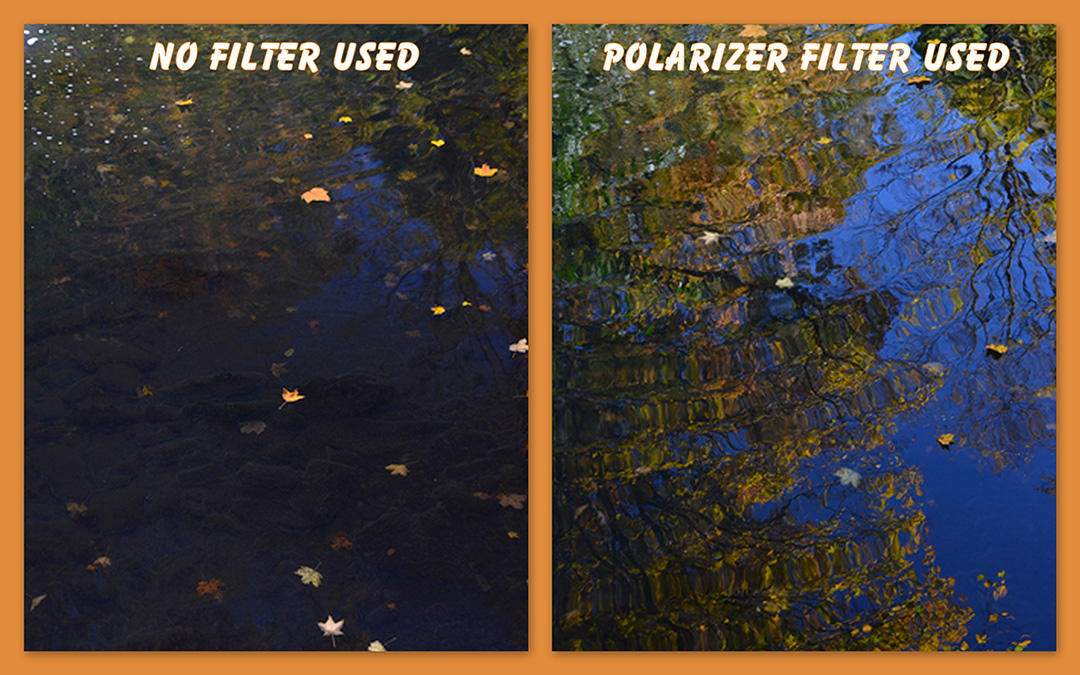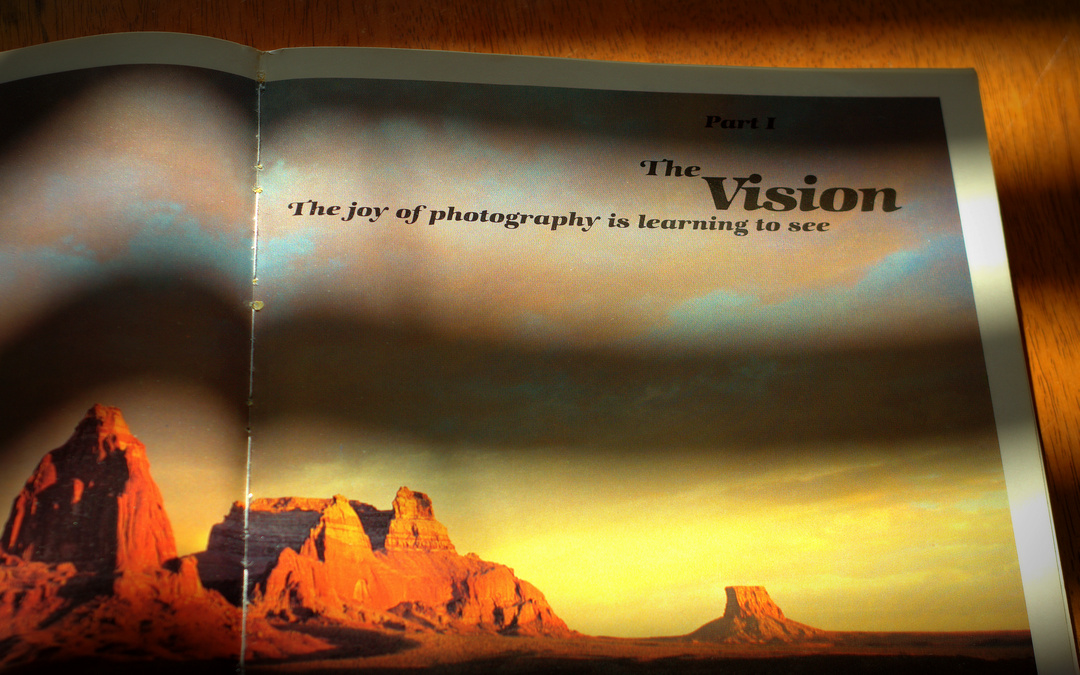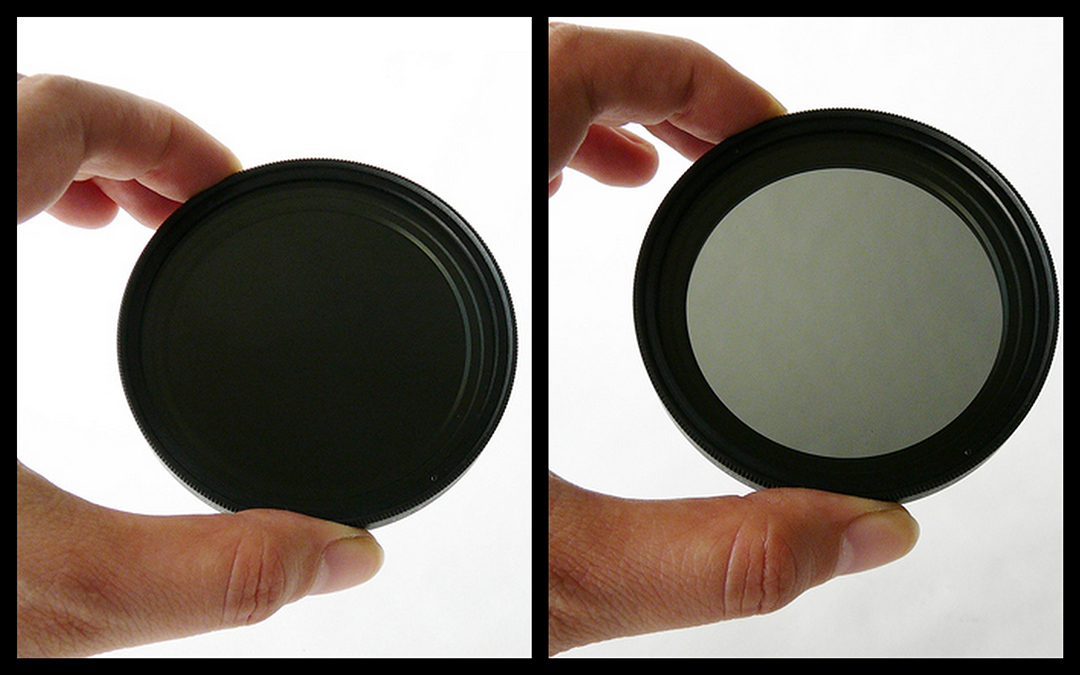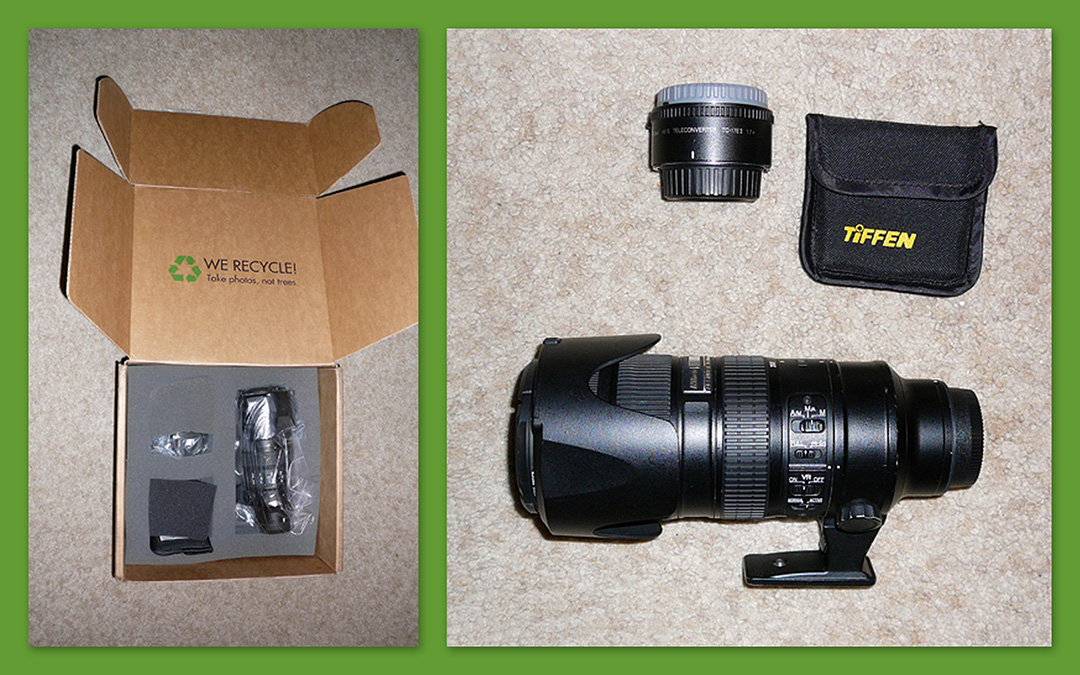What is a circular polarizer?
A circular polarizer helps to reduce glare and reflections. As a result, it diminishes hazy summer skies, increases the contrast between blue sky and white clouds, and can reduce reflections in water and glass.
When to Use a Circular Polarizer
Blue sky: Depending on the time of day, the polarizer will deepen the blue sky, making the white clouds “pop.” Less effective at midday.
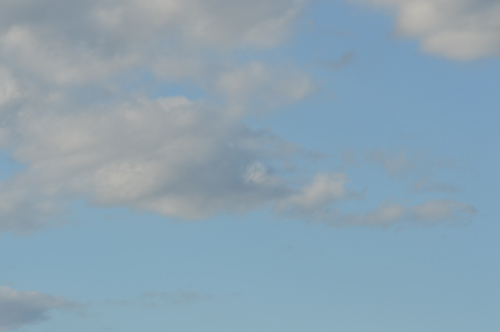
Without a circular polarizer.
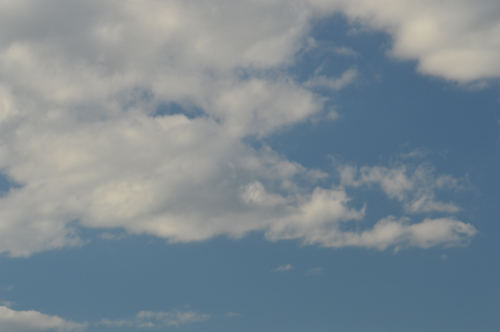
With a circular polarizer.
Reduce reflection: Water and glass both cause reflections that the polarizer can reduce or eliminate entirely.
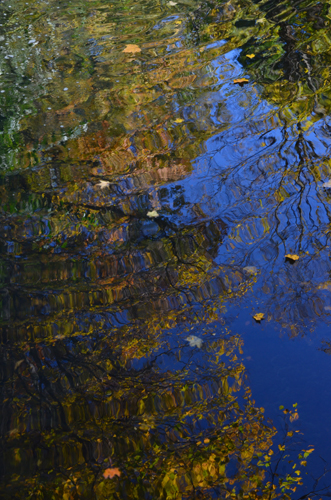
Reflections in water, without a circular polarizer.
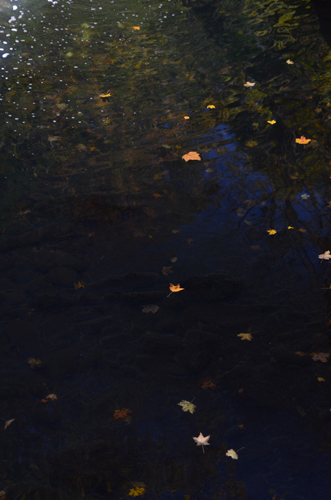
Water, with a circular polarizer. Notice how the reflections have almost disappeared.
Improve the appearance of vegetation: Using a polarizer can impact the green of vegetation, making it look greener and more lush, in addition to reducing the glare if the leaves are wet.
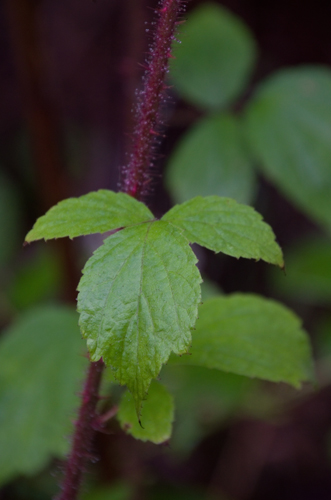
Without a circular polarizer, the wet leaf is noticeably shiny.
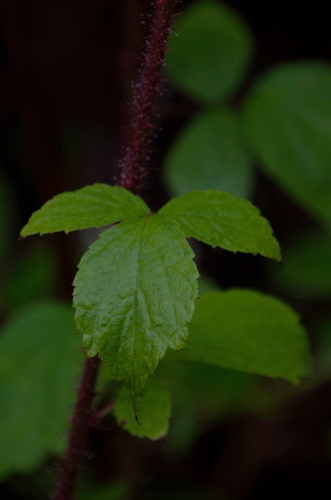
The same leaves, with a polarizer have significantly reduced the glare and improved the greens.
How to Use a Circular Polarizer
The filter screws into the front of your lens. (If you have a point-and-shoot camera, check if your lens has threads on the front to be able to attach a filter. Most do not.) Once attached, you can rotate it to vary the direction of light it filters. Note: rotating it clockwise will help to prevent you from loosening it inadvertently while using it. Keep in mind that you will lose 1-2 stops of exposure when using a circular polarizer. That means you’ll need longer shutter speeds, a wider aperture, or increase your ISO when using one. Remove the filter when shooting at night.
Purchasing
You’ll need to know the diameter of your lens so that you buy the correct size. If you have more than one lens and they are different sizes, you may want to purchase a filter for each one. Alternatively, you could purchase one polarizer for the largest diameter lens and various step-down rings to use on the smaller lenses. More expensive (and better) filters are generally made of glass, rather than plastic.
[easyazon_infoblock align=”left” cart=”n” identifier=”B00004ZCFQ” key=”image” locale=”US” nw=”y” tag=”healfiss-20″][easyazon_infoblock cart=”n” identifier=”B0000BZLAD” key=”image” locale=”US” nw=”y” tag=”healfiss-20″]

Article by Nicki Toizer
Nicki is the Technical Director at The Mt. Airy Learning Tree in Philadelphia, Pennsylvania.
She is a fine art photographer, book designer for self-publishing authors, Star Wars fan, LEGO aficionado, and cat lover.
You can find her at Toizer.com

